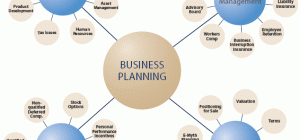
Nearly 32 years ago, the science fiction writer, Isaac Asimov, wrote: ‘No sensible decision can be made any longer without taking into account not only the world as it is but the world as it will be.’ This sentiment is now enshrined in business strategy, as organisations increasingly turn to scenario planning as a way of anticipating the future.
Scenario planning was originally developed by the United States Air force shortly following World War II. In the 1960s Herman Kahn, who was part of the team that developed the concept, went on to refine it for business purposes.
Shell Oil
In the 70s, scenario planning took a major step forward as Pierre Wack, who was a planner for oil giant, Shell, used the concept. Wack was looking for a way to test factors that might affect oil prices. Using scenario planning, Wack and the other planners drew up two eventualities and projected the financial impact of each.
The first story followed the standard assumption at Shell, which was that oil prices would remain unchanged.
The second scenario outlined another future where the recently created OPEC caused an oil price crisis. Shell management subsequently revised its strategy to take this scenario into account.
In 1973, Wack’s scenario came to pass and following the Yom Kippur war in the Middle East, there was an oil price crisis. Shell was the only one of the major companies to be prepared and moved from the weakest of the seven major players to the second largest in a matter of years.
It was this event that gave birth to the concept of scenario planning in the modern business era.
There are very few companies who are not using scenario planning in some form or another. However, many organisations have not explored the benefits that complex scenario planning can bring.
This form of business planning allows organisations to explore alternative futures, preparing for a variety of different outcomes. By examining how the company will performing in different scenarios, business leaders can avoid the pitfalls of linear thinking.
Contingency planning is an offshoot of scenario planning and looks more specifically at what effect sudden disruptions to the market or business might have on a company. Scenario and contingency planning gives businesses the opportunity to test financial outcomes in a hypothetical environment, which ultimately allows companies to choose the best course of action when making business decisions.
By taking the time to explore trends and building variables such as economic, political, technological and social factors into models, organisations can develop a portfolio of alternate futures and can have a robust strategy in place to deal with each one.
Big data
Big data is now allowing organisations to build incredibly complex models which take into account vast amounts of variables. Software is becoming increasingly accessible, which means that even the smallest of companies can plug their raw data into their scenario planning models.
While there are some critics of scenario planning, the fact remains that thinking outside of the box allows organisations to preemptively take action. As management expert, Prof Gary Hamel says: “The problem with the future is that it is different. If you are unable to think differently, the future will always arrive as a surprise.”







